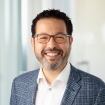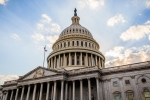
How Peel Regional Police is becoming Fit for Purpose
Public safety & justice case study
Strategic alignment, cultural shifts and technology enablement key to setting the organization on a new path
Client: Peel Regional Police
Industry: Police services
Today's issues: Fit for Growth
Country: Canada
Introduction
Like most organizations, Peel Regional Police (PRP) faced a challenging year in 2020. The COVID-19 pandemic created new risks and uncertainties; inequality, diversity and inclusion rose to the top of the public agenda; and government agencies stepped up like never before to keep Canadians safe even as resources remained tight amid unprecedented economic disruption. Through it all, PRP kept a sharp focus on its transformation strategy, ensuring that continued progress on change and innovation would help it meet rising demands and expectations as it reinvented how it serves the public.
“So our goal is to eliminate all these barriers where possible, so that they are ready to go out and deal with those unpredictable incidents. Every time we see an opportunity to eliminate some of these barriers, we’re trying to do that instead of creating them.”
Challenge
Similar to many police services, PRP has a hierarchical culture that Chief Nishan Duraiappah says works well in a crisis but isn’t always a good fit with a more progressive approach where officers can ask more questions and explore different ways of managing a situation. “If you talk to a police leader or anybody in policing, they believe policing is built on experiential wisdom, where we respond in a certain way because we’ve done it like this for 30 years,” says Chief Duraiappah.
That culture was just one of the areas of change Chief Duraiappah focused on when he took the helm of PRP in late 2019. He had spent 25 years in policing in neighbouring Halton Region, where his experience included investigative work, community policing and exposure to technology and innovation. Digitization was a particularly strong opportunity for change at the PRP, which had a risk-averse approach to technology. The organization had about 180 initiatives to pursue but, with stretched resources, only a few of them were actively moving forward. PRP also faced demands to build trust and improve relations with the community and a critical need to embrace equity, diversity and inclusion.

Approach
Before proceeding with making changes, Chief Duraiappah knew the organization needed a strategy to make sure any moves he made were the right ones and would deliver the results he was seeking. This required broad consultation internally and externally and a deep look at PRP’s vision and operations to determine what its top priorities should be and how it could deliver on them. “Our vision is to be the most progressive police organization in Canada, if not North America, which means we can’t keep throwing more resources at these challenges. We have to look internally at how our processes are working,” says Chief Duraiappah.
Three key priorities emerged early on: improving service delivery and putting into practice the recommendations from a service delivery review undertaken by PwC, alongside a sharpened focus on strategic innovation and modernizing community policing. One of the first moves in response was to realign PRP’s structure to better reflect those priorities by appointing deputy chiefs responsible for innovation and infrastructure and for community policing. This would allow for a more coordinated approach to these priorities rather than, as was the case before, having local commanders determine their own response to critical issues like community policing.
As part of efforts to modernize community policing, PRP has also focused on empowering officers to try different approaches from the traditional tools police tend to bring to a situation. “Sometimes, it’s just call-response, where we’re stepping over the addictions problem or the employment issue and we’re dealing with the symptom at the moment and back at the same house every Friday night,” says Chief Duraiappah. “If we know we’ve been to someone’s house 10 times in the last three months, we now bring it to community partners to say, ‘We notice that there’s an addictions problem or a mental health problem.’ We provide a connection to services. It’s a non-traditional approach that’s really shifting what mobilization teams are doing to mitigate risk versus waiting until it gets to response.”
A key factor supporting this change is the shift of resources and officers to PRP’s key service areas. While the service has been able to add 27 new officers, it has also moved 183 people to services like mobile crisis rapid response teams to better address mental health and addictions issues. Other areas of focus include family and intimate partner violence, to which PRP has dedicated almost 50 officers. As part of efforts to build trust and improve relationships by thinking and serving the public differently, those officers don’t wear uniforms, Chief Duraiappah says.
Technology has also been critical to enabling and freeing up capacity for many of the changes PRP has made, set in motion by a technology and innovation strategy undertaken by PwC. Examples of technology investments include:
The introduction of body-worn cameras allows for two-way streaming to the 911 dispatch centre, which means a crisis worker can monitor what’s happening during a call and help officers respond;
Rolling out mobile devices with access to tools like electronic records management and note taking that help officers do their work in the community more efficiently.
Shifting to common platforms to integrate and connect PRP’s digital tools, including its new digital evidence management system; and
In line with PRP’s goal of empowering officers and changing the workplace culture, giving officers access to business intelligence tools that provide them with the data they need to make decisions.
Realizing PRP’s vision has required it to not just invest in key priorities but also to say what it won’t do. On technology, for example, that has meant narrowing that initial list of about 180 projects to those with the biggest impacts on PRP’s strategic plan and its top areas of focus. PRP has also changed how it serves schools. While it has an active youth engagement program focused on important issues like cyber safety, bullying and social development, it has let others take the lead on responding to mental health matters in schools. “That’s not our space,” says Chief Duraiappah. “Yes, we will be there when there’s violence or the need to protect life. But that’s a public health issue.”

Impact
In a short period of time, PRP has set itself on the path to achieving its goals by prioritizing what matters most and creating momentum for transformation through immediate and impactful changes. It has done this by following several leading practices for transforming public sector organizations: keeping the focus on the community’s needs, developing and following a strategic blueprint, freeing up resources to create capacity and nurturing a change-friendly culture. And critically, it has aligned PRP’s operating model to its strategic priorities and areas of focus.
So what’s next in the journey? Chief Duraiappah has a busy agenda ahead, including both big-picture initiatives and small actions that can make a difference. One of them is simple: giving officers baseball caps so they can be more comfortable at work. “That is a non-traditional approach, because the policy says, ‘We’re cops. You wear your hat.’ But if my officers are coming on their night shift in a situation where they’re not just worried about gang violence, shootings or carjackings but they’re also plagued by infrastructure issues that are controllable, then that’s not allowing them to be the most effective. They’re fighting a battle on two fronts, and you’re reducing their capacity.
Contact us


Ontario Government and Public Sector Leader, PwC Canada
Tel: +1 416 814 5736 | Cel. : +1 416 806 8194





















